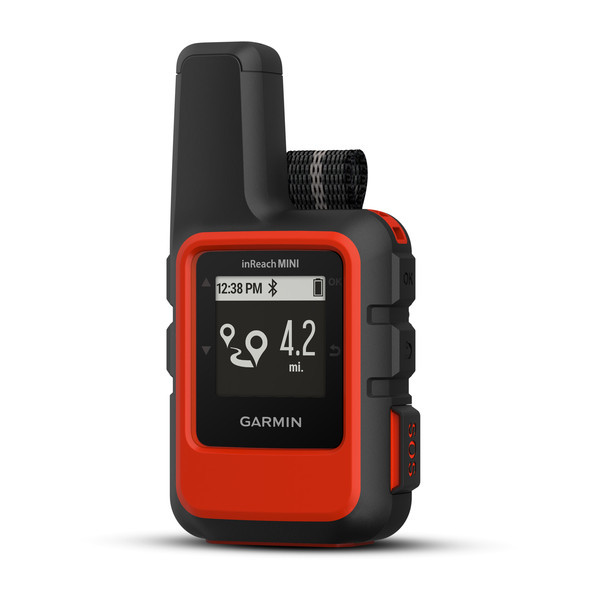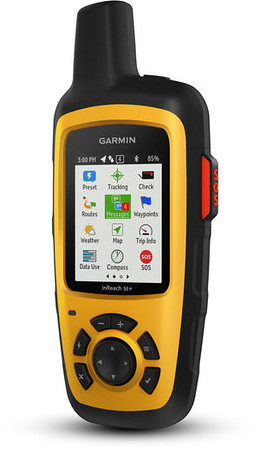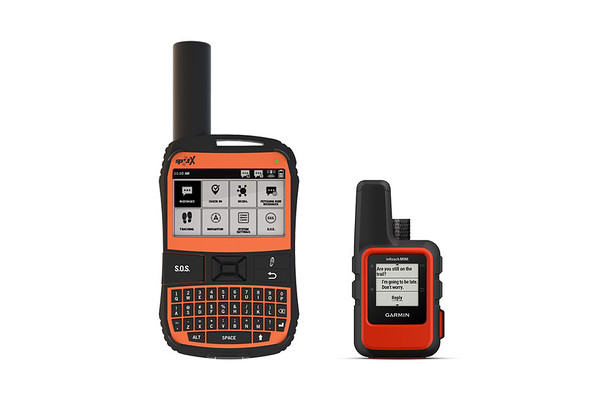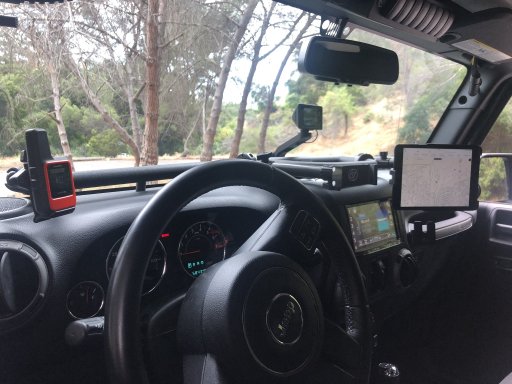I agree! Since I end up camping alone and in spots with no cell service it's good insurance. Not that there is any crazy hiking in the lower Peninsula of Michigan.............but after my AZ helicopter rescue I've been thinking about it again. Haven't done it yet though.As more and more people get out and start enjoying the outdoors around the world, this service Information needs more attention! Even, if you don’t have a known medical issue, those In the know should spread the word. As an X mountain climber, I thought it a good practice to have a safety beacon Incase something happened. Now as an older Male, I think this equipment should be part of my personal Overland equipment. Vance.
OB Approved Personal Satellite Communicators
- Thread starter ovrlndr
- Start date
-
Guest, UPDATE We went through the site migration runbook and completed all steps. We will need to complete the migration next week, but will leave the forums up for the weekend. A few days after maintenance, a major upgrade revision to the forum site will occur.

Member III
jimbofoxman,Mine was on April 3. I'm from Michigan. Dad lives in Apache Junction right where it turns from highway into divided. My sister lives in Mesa out by the old GM Test Track.
We went up Peralta to Lone Tree and then decided to come down Cave Trail which was the down fall. Wasn't bad until you are basically sliding down rock faces. I didn't realize it was Cave Trail when we decided to go back down that way. I read so many trail descriptions and just dropped the ball on that one. So we started back up and I was stopping every 10 feet or so of climb and catching my breath for several minutes. Last place we stopped I didn't move for 2 hour and it took me probably 20 mins to stop breathing heavy. Thought I was going to pass out, couldn't eat anything. Some of it was anxiety of having to go back up. Lot was dehydration and too much hiking over the past few days. I don't remember my blood pressure when the first person in go to me but she said.......nope you are not hiking back up. Then they made the call to get the second helicopter outta Tucson.
My daughter's video of me climbing in. Video 1
My daughter's flight down. First helicopter (old Huey) was up at the top just down from Lone Tree area. I don't remember any of the flight other than getting in and landing. Video 2
Sorry to hijack the tread........I only wanted to add my experience when someone asked about cost.
Thank you, for sharing your story! Glad you are still around and a Member of OB! Vance.

Advocate III
Mine was on April 3. I'm from Michigan. Dad lives in Apache Junction right where it turns from highway into divided. My sister lives in Mesa out by the old GM Test Track.
We went up Peralta to Lone Tree and then decided to come down Cave Trail which was the down fall. Wasn't bad until you are basically sliding down rock faces. I didn't realize it was Cave Trail when we decided to go back down that way. I read so many trail descriptions and just dropped the ball on that one. So we started back up and I was stopping every 10 feet or so of climb and catching my breath for several minutes. Last place we stopped I didn't move for 2 hour and it took me probably 20 mins to stop breathing heavy. Thought I was going to pass out, couldn't eat anything. Some of it was anxiety of having to go back up. Lot was dehydration and too much hiking over the past few days. I don't remember my blood pressure when the first person in go to me but she said.......nope you are not hiking back up. Then they made the call to get the second helicopter outta Tucson.
My daughter's video of me climbing in. Video 1
My daughter's flight down. First helicopter (old Huey) was up at the top just down from Lone Tree area. I don't remember any of the flight other than getting in and landing. Video 2
Sorry to hijack the tread........I only wanted to add my experience when someone asked about cost.
Wow.
Thanks for sharing!
I think these stories are important as cautionary tales, and improve the general body of knowledge amongst the community at large!
I am familiar with Peralta Trail and that general area.
View from the top of Flat Iron toward AJ.

The elevation gain on these trails is no joke!
Important thing is you kept your wits and survived to fight another day!

Advocate III
Same here!As more and more people get out and start enjoying the outdoors around the world, this service Information needs more attention! Even, if you don’t have a known medical issue, those In the know should spread the word. As an X mountain climber, I thought it a good practice to have a safety beacon Incase something happened. Now as an older Male, I think this equipment should be part of my personal Overland equipment. Vance.
My InReach is part of my personal permanent kit.
My downfall was hiking both days before. First day was an easy sunset hike, but I did Praying Hands the day before. They said my electrolytes were probably all jacked.Wow.
Thanks for sharing!
I think these stories are important as cautionary tales, and improve the general body of knowledge amongst the community at large!
I am familiar with Peralta Trail and that general area.
View from the top of Flat Iron toward AJ.
The elevation gain on these trails is no joke!
Important thing is you kept your wits and survived to fight another day!
And yes....Siphon Draw to Flatiron is no joke. My daughter, her boyfriend and I did it several Christmas ago. Well they did it.......I almost made it, but was worried about daylight for me getting back down. I was so close! Probably good I didn't finish......felt like a zombie the last half mile coming back.

Advocate III
Truth be told ... I'd rather climb up than climb down.My downfall was hiking both days before. First day was an easy sunset hike, but I did Praying Hands the day before. They said my electrolytes were probably all jacked.
And yes....Siphon Draw to Flatiron is no joke. My daughter, her boyfriend and I did it several Christmas ago. Well they did it.......I almost made it, but was worried about daylight for me getting back down. I was so close! Probably good I didn't finish......felt like a zombie the last half mile coming back.
Up is hard.
Down is hard and scary.

Contributor I
Thanks for the information. Is there any info on what type of service I should purchase? I am new at this.Everyone participating in outdoor recreation of any kind in remote areas, especially those where cell reception is spotty or non-existent, contact with other people is infrequent, and the elements and/or terrain can lead to accidents, injury, or death should consider some type of personal satellite communicator.
A few incidents led me to finally bite the bullet and purchase one:
Beyond vehicular issues, or accidents that could lead to injury or death during outdoor activities, there are other reasons to carry a personal satellite communicator. Keeping in touch with friends, family, or (however unfortunate) work may be reason enough for some. Pre-existing medical conditions may be a concern to some; for example, one of my buddies has a son with hemophilia (disorder in which blood does not clot normally). It's possible that simply tripping over a rock at a campsite could result in a serious medical situation, and depending on where he is, one that could require immediate evacuation. Heart conditions or other medical conditions are great reasons that you may want to consider carrying a satellite communicator with you.
- I've experienced four "non-starts" on a brand new Mercedes Sprinter van that I had owned for less than 3 weeks and had less than 1,000 miles on the odometer. Two of the non-starts came on mountain passes in areas with no cell reception. I have roadside assistance in my vehicle insurance and it's included in the warranty on the van... but it is of absolutely no use if I cannot contact them.
- On day 2 of what was to be a 5 day overlanding trip, one of the motor mount brackets on the engine oil pan skid plate I run on my Jeep wore a hole through the engine oil pan. Yes, I understand the irony of the situation. No, it was not funny. Yes, my friends that were on the trip bust my chops about it. Luckily, I was with 7 other experienced people and one of them had a roll of QuikSteel handy. If this had happened earlier on the trip, we would have been without cell service. If this had happened later on the trip, we would have been without cell service. If this had happened to me when I was out by myself, I may have been without cell service and likely would not have been equipped to make the repair (though, you can probably guess what I now carry a roll of in my on-board toolkit)
- I have had several pretty rough falls on my mountain bike and snowboard. It's a risk that comes with the sports. Even the best athletes in the world still have crashes and accidents. Many times when I'm on the bike or on the board, I have no cell reception.
Personal satellite communicators come in various sizes, with various features, plans, and related costs, so there is probably one that will suit your particular needs, wants, and budget.
What I would look for in a device is the ability to at least have a tracking feature, so that someone that is not out with you can track your location and communicate it to emergency services if needed, the ability to send at least some sort of message to someone that is not with you (whether it be a full blown text message or email, or just a canned message), and an SOS feature (which communicates directly to emergency services / SAR teams and can include things like getting a helicopter evacuation to your location if necessary).
Personally, I own the Garmin inReach Explorer+, but there are a lot of these devices available on the market, and there are plenty of sites that review them and go into much more detail, but I will list the more common ones for outdoor adventurers below.
As mentioned above, there are quite a few places to find detailed reviews of these devices, as well as other devices not mentioned above. These are the devices that I had considered as my final contenders when doing my own research, but I would encourage you all to spend some time reading reviews to see what device may best suit your needs and budget. SPOT also recently, in the last few months, released the SPOT X which compares better with the larger inReach (SE+ / Explorer+) units and offers all of the features of the SPOT, plus messaging / email via a full (BlackBerry-esque) keyboard and a compass.
- Garmin inReach Mini
- Garmin's newest entry into the inReach series, the Mini (as its name indicates) is a lightweight and compact satellite communicator
- Least expensive of the inReach devices
- While the device does have a display, it is a monochrome MIP screen which is smaller than the other devices in the inReach series
- It does not have internal memory or preloaded maps
- In order to use certain features (like mapping), you must pair the Mini to another device (like an iPhone), which could be an issue if you are without your phone, your phone breaks, or the battery on your phone dies
- 500 waypoints, 20 routes
- Battery life is not as good as the larger inReach devices (but pretty close in the default mode), but this is a cost of a smaller form factor
- Bluetooth compatible
- Triggers an interactive SOS to 24/7 search and rescue monitoring center (GEOS response)
- Send and receive text messages to SMS and email (includes link to location on map)
- Send and receive messages with other inReach users and exchange locations
- Track and share location with friends and family on web-based mapping portal
- Request weather forecasts for current location and planned destination
- Virtual keyboard for custom text messaging
- Send waypoints to mapping portal during trip
- Send route selection to mapping portal for friends and family to see progress
- Garmin inReach SE+
- Similar to the inReach Explorer+, the SE+ lacks the built-in memory, the preloaded DeLorme topo maps, the barometric altimeter, the digital compass, and the accelerometer that are in the Explorer+, but other than these, has the same features as the Explorer+ // I believe the lack of digital compass means that you have to be moving for this to determine your heading, whereas you can determine direction when standing still using the Explorer+
- It is the same size and weight as the Explorer+ and has the same battery life and number of waypoints and routes, as well
- I personally think the maps, built-in memory, and sensors are worth the $50 upcharge to the Explorer+
- Garmin inReach Explorer+
- This is the granddaddy of Garmin's inReach series, and includes 2GB built-in memory, preloaded DeLorme topo maps, barometric altimeter (more accurate than altitude reading provided by GPS), digital compass, and accelerometer
- 500 waypoints, 20 routes
- Bluetooth compatible
- Triggers an interactive SOS to 24/7 search and rescue monitoring center (GEOS response)
- Sends and receives text messages to SMS and email (includes link to location on map)
- Send and recieves messages with other inReach users and exchange locations
- Track and share location with friends / family on web-based mapping portal
- Request weather forecasts for current location and planned destination
- Virtual keyboard for custom text messaging
- Send waypoints to mapping portal during trip
- Send route selection to mapping portal for friends and family to see progress
- SPOT Gen3
- Less expensive than the least expensive inReach device (Mini) by a couple hundred dollars
- No display screen
- Compact form factor
- Custom tracking rates and continuous, motion-activated tracking
- SOS button - With the push of a button, GEOS International Emergency Response Coordination Center provides your GPS coordinates and information to local response teams - for example contacting 9-1-1 responders in North America and 1-1-2 responders in Europe
- Check-in button - Let family and friends know you're ok when you're out of cell phone range. Send a pre-programmed text message with GPS coordinates or an email with a link to Google Maps™ to your contacts with your location. With a push of a button, a message is sent via email or SMS to up to 10 pre-determined contacts and your waypoint is stored in your SPOT account for later reference. Your stored waypoints can be easily integrated into a SPOT Shared Page or SPOT Adventure account.
- Help / Save Our Vehicle (S.O.V.) button - Alert your personal contacts that you need help in non-life-threatening situations. Or, use SPOT S.O.V. for professional services on land. (Additional service required).
- Custom message button - Stay in touch while off the grid by sending your custom message. Set up a message before leaving to send to contacts with your GPS location. Use this feature as a secondary OK message or transfer your personal help alert to this message function if you are using a SPOT S.O.V. service on your Help button.
- Better battery life than the inReach series, but fewer features
I gave an overview of several different units available on the market mostly to show the types of features that you may want to look for; as technology progresses and this article ages, some of these devices may become obsolete as newer devices and features are released, BUT the features in the devices listed above are still a GREAT baseline for choosing a device that will get you out of trouble.
Whatever the device, it is a smart choice to carry a personal satellite communicator with you when venturing into the backcountry as we overlanders are known to do...
Below are some images of the various devices mentioned in this article, and some images of size comparisons of the units.

Garmin inReach Mini

Garmin inReach SE+

Garmin inReach Explorer+

Size Comparison: Garmin inReach Mini and Garmin inReach Explorer+

Spot Gen3

SpotX

Size Comparison: SpotX and Garmin inReach Mini

Advocate III
Personally, the Garmin low-cost annual plan is the least expensive and most convenient.Thanks for the information. Is there any info on what type of service I should purchase? I am new at this.
The rate based text is no biggie.
It is always on, which is one less thing to worry about.

Member III
Roger Jeffery,Thanks for the information. Is there any info on what type of service I should purchase? I am new at this.
I’m new to this aspect of Overland travel myself. Keep looking at the posts here on Overland Bound, and research things out for yourself. Spend time in stores looking at units in person if you can. If that is not possible, after your research, look up reviews videos on YouTube. Best option is to find friends the have the equipment and see what you think. There is a lot of good information here with our Members, that will help you if they can! Vance.

Member III
- 2,771
- First Name
- Rolando
- Last Name
- Nispiros
- Member #
-
17011
- Ham/GMRS Callsign
- KN6JJS
When/If I ever get a Garmin InReach Explorer, found a nice windshield mount for it - Garmin Spine Mount for Handheld Devices | RAM Mounts

Contributor I

Enthusiast I
I've owned a Spot messenger (1st gen) for 10 years and I am upgrading to a Spot-x this week. I never heard of Bivystick but you picked my curiosity so I checked them out.
They talk about being affordable but they are only a bit cheaper than Inreach. Their service costs more than a Spot-x flex plan. I like Bivistick's idea of credits. You buy them and you decide what you want to use them for, wether it'd be messaging or sharing location. The problem is that you only get 10 credits for 18$ and then each message or location sharing costs you $0.50.
Spot's flex plan is 3$/mth cheaper, you get 20 messages, extra ones are $0.25 each, unlimited predefined messages and check in messages, unlimited tracking at 10, 30 or 60 minutes intervals. The check in and predefined message services do not exist with Bivystick, that alone for me would be a deal breaker.
I would consider Bivystick a better deal than Inreach however. Inreach's freedom is more expensive, has the same number of messages (10) but extra ones are $1.75 each. But Inreach has predefined messages which Bivystick does not have.
A final note, my thoughts about the charging port on the Bivystck. It may seem like a nice features but one should keep in mind that any energy that is diverted to charging the phone is that much less power one will have for sending SOS messages in case of an emergency.
They talk about being affordable but they are only a bit cheaper than Inreach. Their service costs more than a Spot-x flex plan. I like Bivistick's idea of credits. You buy them and you decide what you want to use them for, wether it'd be messaging or sharing location. The problem is that you only get 10 credits for 18$ and then each message or location sharing costs you $0.50.
Spot's flex plan is 3$/mth cheaper, you get 20 messages, extra ones are $0.25 each, unlimited predefined messages and check in messages, unlimited tracking at 10, 30 or 60 minutes intervals. The check in and predefined message services do not exist with Bivystick, that alone for me would be a deal breaker.
I would consider Bivystick a better deal than Inreach however. Inreach's freedom is more expensive, has the same number of messages (10) but extra ones are $1.75 each. But Inreach has predefined messages which Bivystick does not have.
A final note, my thoughts about the charging port on the Bivystck. It may seem like a nice features but one should keep in mind that any energy that is diverted to charging the phone is that much less power one will have for sending SOS messages in case of an emergency.

Contributor I

World Traveler I
You can purchase 100k of SAR insurance through Garmin. My total plan is around $17/mo...worth every penny.Can I ask how much it ended costing for the emergency response and rescue? I know you can’t put a price on saving your life or others out in the wilds when an accident happens! Vance.

Influencer I
I wrote an article about SAR cards and insurance... it’s still in the “submit a boot camp article for review section,” and it seems like a lot of other articles are as well... not sure what’s going on with the approval process lately. At any rate it can be found here:Thanks for the information. Is there any info on what type of service I should purchase? I am new at this.
The Importance of Search and Rescue Insurance, Donations, and SAR Cards (US)
OB Approved - The Importance of Search and Rescue Insurance, Donations, and SAR Cards (US)
This article applies to the United States, but the information may be useful to those outside of the U.S. as well. Being that search and rescue is typically a responsibility that falls to local law enforcement and varies state-to-state, it is difficult enough to scope this article for just the...
mjherron
Rank V

Member III
Ovrlndr, thank you for the write up! Looking at getting a Garmin inReach soon. To others in this thread greatly appreciate the information as well.
mjherron
Rank V

Member III
ScottE, thanks for this info also!You can purchase 100k of SAR insurance through Garmin. My total plan is around $17/mo...worth every penny.

Off-Road Ranger I
I use a Garmin inReach Mini, which also provides the GPS signal via Bluetooth, to the Gaia GPS software on the iPad mounted in vehicle. I use the inReach to check-in with family at trailheads, when I get to campsites, and to send an all clear heading home message when finished. I set it so all the messages include a link with the current location. You can send and receive inReach messages in the Earthmate software on the iPad.

Last edited:

Traveler II
- 3,858
- First Name
- Michael
- Last Name
- Lester
- Member #
-
19079
- Ham/GMRS Callsign
- KC5DWF
- Service Branch
- Navy
So I have a Garmin Inreach Explorer+ inbound. My question is can this be use with out a service plan for GPS location info only? In other words, will this track my location without having to buy the service plans?
Out of all my online research I have yet to find anything that stated that this would function as a plain old GPS without the Iridium system and it's plans.
When I start going away from pavement for more than two nights on a trip, then I will get the rest of the bells and whistles.
Out of all my online research I have yet to find anything that stated that this would function as a plain old GPS without the Iridium system and it's plans.
When I start going away from pavement for more than two nights on a trip, then I will get the rest of the bells and whistles.
Recently picked up a Spot X for our upcoming expedition. $200~ out the door, then another $125 for setup ($25), 1 month of unlimited service ($40) and both rescue ($30) and roadside assistance ($30).
The GPS tracking, contact list, SOS, and text made this cheaper alternative super appealing.
The GPS tracking, contact list, SOS, and text made this cheaper alternative super appealing.

